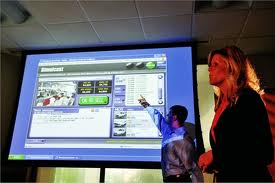Throughout 2012, new auto sales have continued to increase. At a glance, it may not seem like this would affect public car auction prices, however it is exactly what auction goers needed to see. As new car sales continued to climb, as they are expected to do, winning bidders at popular public car auctions will start paying lower and lower prices.
The Low Number of New Car Sales and Leases Led to a Shortage of Quality Used Cars in 2011
Towards the end of 2011, it became clear that the low volume of new car sales directly lead to a shortage of quality used cars across all areas of the secondary market. There were even reports of used car dealerships paying more for a used car at auction in 2011 than they sold the same car for a few years earlier. Any time the number of new car sales experiences a drop off like it did in 2010 and 2011, the number of available late-model used cars on the secondary market become hard to find.
During the same time, leasing became a very unpopular option. During the tough economy and credit crisis, the idea of leasing a car became almost nonexistent among most households. This was terrible news for the secondary car market because car leasing is considered to be one of the biggest sources of newer model used cars.
Some Used Cars Became Almost Expensive as New Cars
At the end of 2011, new vehicles were selling for only 11.5 percent more than a comparable one-year-old used car. There were even some models in which this gap was even smaller. For example, a one-year-old Chevrolet Camaro LT sold for an average price of $25,135 which was only $126 less than the 2012 model. In fact, Edmunds.com estimated that a typical 60 month loan for a new Acura MDX with a tech package would be an average of $746 new and $756 used. Prior to the two-year surge in used car prices, the average gap between a new car and one-year-old used car tends to be closer to 20 percent.
Things Are Finally Starting to Change
With increasing sales of new cars across the country, used car prices are finally starting to decline again. In fact, it is estimated that in 2012 more than 2 1/2 million more new cars will be sold than in 2011. As a result, there has been a much-needed flood of used cars into the secondary market. This has already driven down used car prices and also explains the recent surge of excellent deals found at public auto auctions. The stronger the new car market becomes, the weaker the used car market is.
How Does This Affect the Average Auto Auction?
This is great news for the auto auction industry and will affect consumers in several different ways.
- Average Auto Auction Prices Are Declining
The most obvious benefits for public auto auctions are lower average prices on used cars. This is excellent news for consumers to turn to these auctions in order to save money on quality, reliable used cars for their household.
- More High Mileage Vehicles Are Up for Auction
Since there were several years where few people traded in their cars for new ones, many of the used cars which are hitting the secondary market will have higher mileage than what was seen in the mid-2000s. In fact, it is estimated that the average age of an American vehicle reached a record high of 10.8 years during 2010-2011.
As a result, the average card auction will have a few more miles than it used to. Fortunately, cars no longer wear out at 100,000 miles. With significant technological improvements over the past decade, the average car can easily go 200,000 miles or more without a major investment – such as a new transmission. Plus, an injection of higher mileage cars at auto auctions means lower average prices at every auction.











